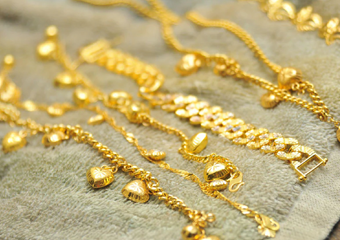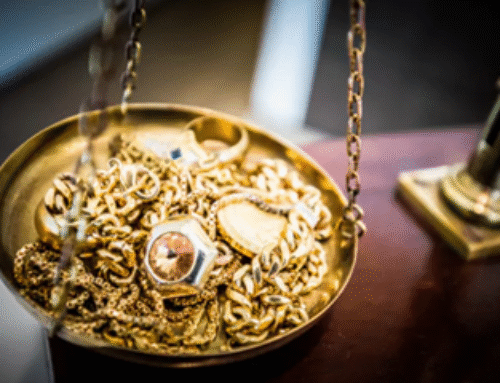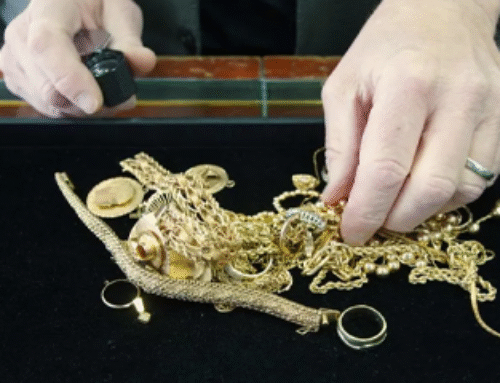You find it tucked away in a jewelry box or spot it at an estate sale—a beautiful piece of jewelry with the unmistakable, sunny glint of gold. It feels heavy in your hand, and for a moment, you wonder about its story and its value. But is it solid gold, or is it a clever imitation? In the world of precious metals, this is the most fundamental question, and the answer can mean the difference between a few dollars and a few thousand.
Understanding how to distinguish solid gold from gold-plated items is essential for anyone who owns or inherits jewelry. As Vancouver’s trusted experts in precious metals, we at Royal Element believe in empowering our community with knowledge. This guide will walk you through the key characteristics of each, and provide simple, at-home tests to help you identify what you truly have.
What is Solid Gold?
When we refer to “solid gold,” we are talking about jewelry made from a consistent gold alloy through and through. As you may know, gold purity is measured in karats. Pure 24k gold is too soft for most jewelry, so it’s mixed with other metals (alloys) like copper, silver, and zinc to add strength and durability. The result is 18k (75% pure gold), 14k (58.3% pure gold), or 10k (41.7% pure gold) alloys.
The key takeaway is this: if a chain is solid 14k gold, every link, from the surface to its very core, is made of that same 14k gold alloy. Its value is based on this entire weight of precious metal.
What is Gold-Plated?
Gold-plating is a process where a microscopically thin layer of real gold is applied to the surface of a less expensive base metal, such as copper, brass, nickel, or zinc. This is typically done through electroplating. The purpose is to give the item the luxurious appearance of gold without the high cost.
While a gold-plated piece does contain real gold, the amount is minuscule—often less than 0.05% of the item’s total weight. Consequently, its intrinsic or melt value is negligible. It’s the jewelry equivalent of a beautiful costume, designed for appearance rather than lasting value.
How to Tell the Difference: 4 At-Home Tests
While a professional appraisal is the only definitive way to know for sure, here are four simple methods you can use at home to gather clues.
1. Look for Hallmarks (The Most Important Clue) This is the single most reliable starting point. Examine your jewelry closely, especially on the clasp, the inside of a ring band, or the back of a pendant. Use a magnifying glass if you have one.
- Solid Gold Hallmarks: Look for a stamp that indicates the karat, either as parts of 24 or as a three-digit number representing purity. Common solid gold marks include: 10k, 14k, 18k, 22k, 417, 585, 750, 916.
- Gold-Plated Hallmarks: Manufacturers of plated jewelry are legally required to indicate it. Look for these common stamps:
- GP: Gold-Plated
- GEP or GE: Gold Electroplated
- HGE or HGP: Heavy Gold Electroplate
- RGP: Rolled Gold Plate
- 1/20 12K GF: This means “1/20th of the item’s weight is 12k gold-filled.” Gold-filled is a thicker layer than plating but is still not solid gold.
2. Check for Visible Wear and Fading Gold-plating is incredibly thin. Over time, friction from skin and clothing will wear it down. Check high-friction areas closely.
- Look for Fading: Do you see a different, less lustrous metal peeking through on the edges of a pendant or the inside of a ring?
- Check for “Greening”: If you see a greenish or blackish discoloration on the jewelry or on your skin after wearing it, this is a telltale sign. It’s the base metal (often copper or nickel) reacting with your skin’s oils, something solid gold will never do.
3. The Magnet Test This is a quick and easy, though not entirely foolproof, test. Gold is not a magnetic metal.
- How to Do It: Grab a reasonably strong magnet (a good refrigerator magnet can work) and hold it up to your jewelry.
- What It Means: If the item sticks to the magnet, it is definitively not solid gold. The magnetic pull is coming from the base metal underneath the plating.
- The Caveat: If the item does not stick, it doesn’t automatically mean it’s real. Some base metals used in plated jewelry, like certain types of stainless steel or copper, are also non-magnetic. However, a positive magnetic test is a definite indicator of a fake.
4. Professional Testing vs. At-Home Acid Professionals use precise methods like electronic testers, X-ray fluorescence (XRF) analysis, and acid testing to determine purity. While you can buy DIY acid test kits, we strongly advise against it. The nitric acid used is highly corrosive and can cause permanent damage to your jewelry if not applied correctly, and can be dangerous to handle. It’s a test best left to the experts.
Conclusion: Get the Definitive Answer
These at-home tests can provide strong evidence, but to know for sure—and to understand your item’s true market value in today’s high-priced environment—nothing replaces a professional evaluation.
At Royal Element, we take the guesswork out of the equation. Our knowledgeable staff in Vancouver uses state-of-the-art, non-destructive technology to accurately assess your jewelry right in front of you. Whether you have a piece you know is solid gold or one you’re simply curious about, we provide a free, no-obligation appraisal. Don’t wonder about your jewelry’s value any longer. Visit us today and leave with a definitive answer and the confidence of knowing exactly what you own.




